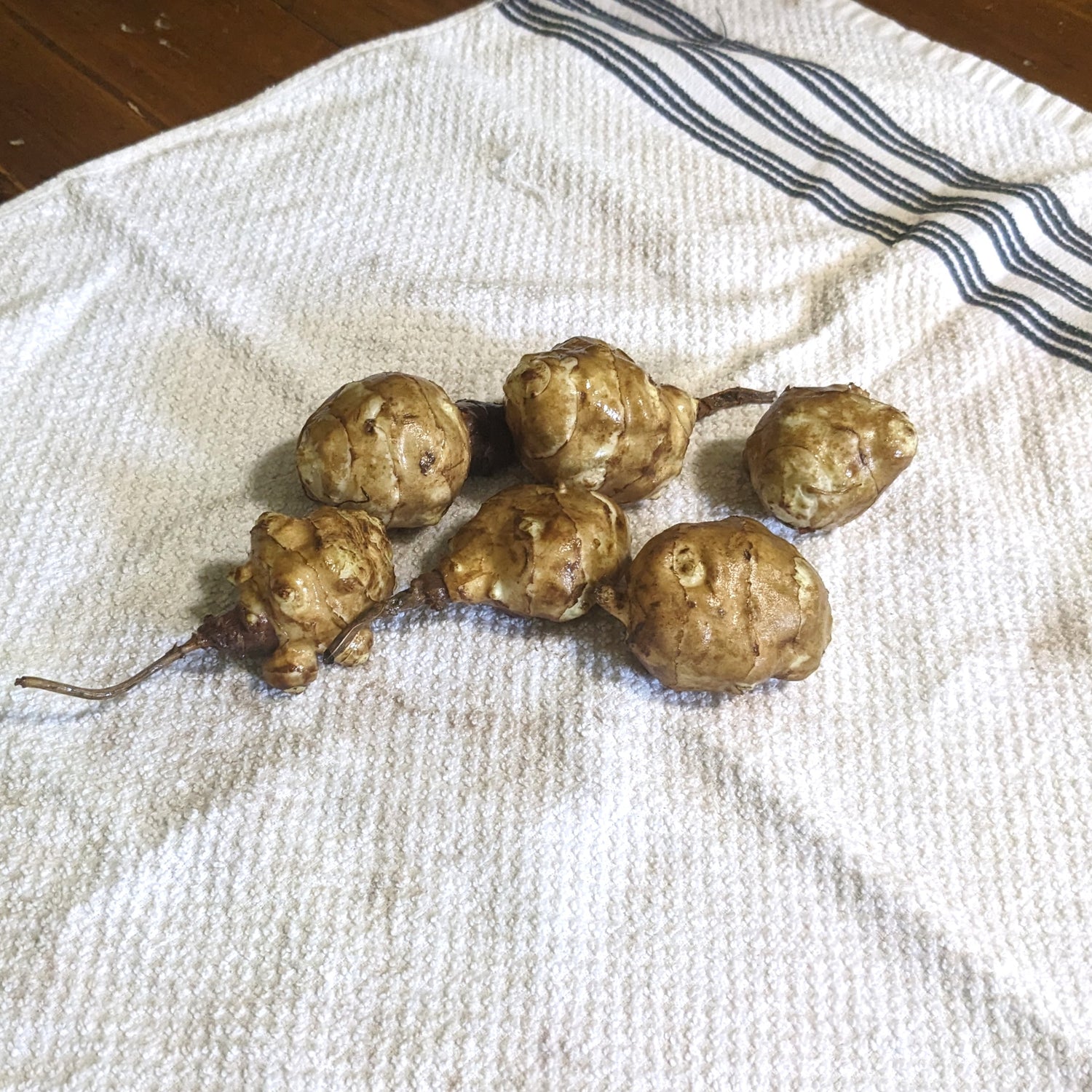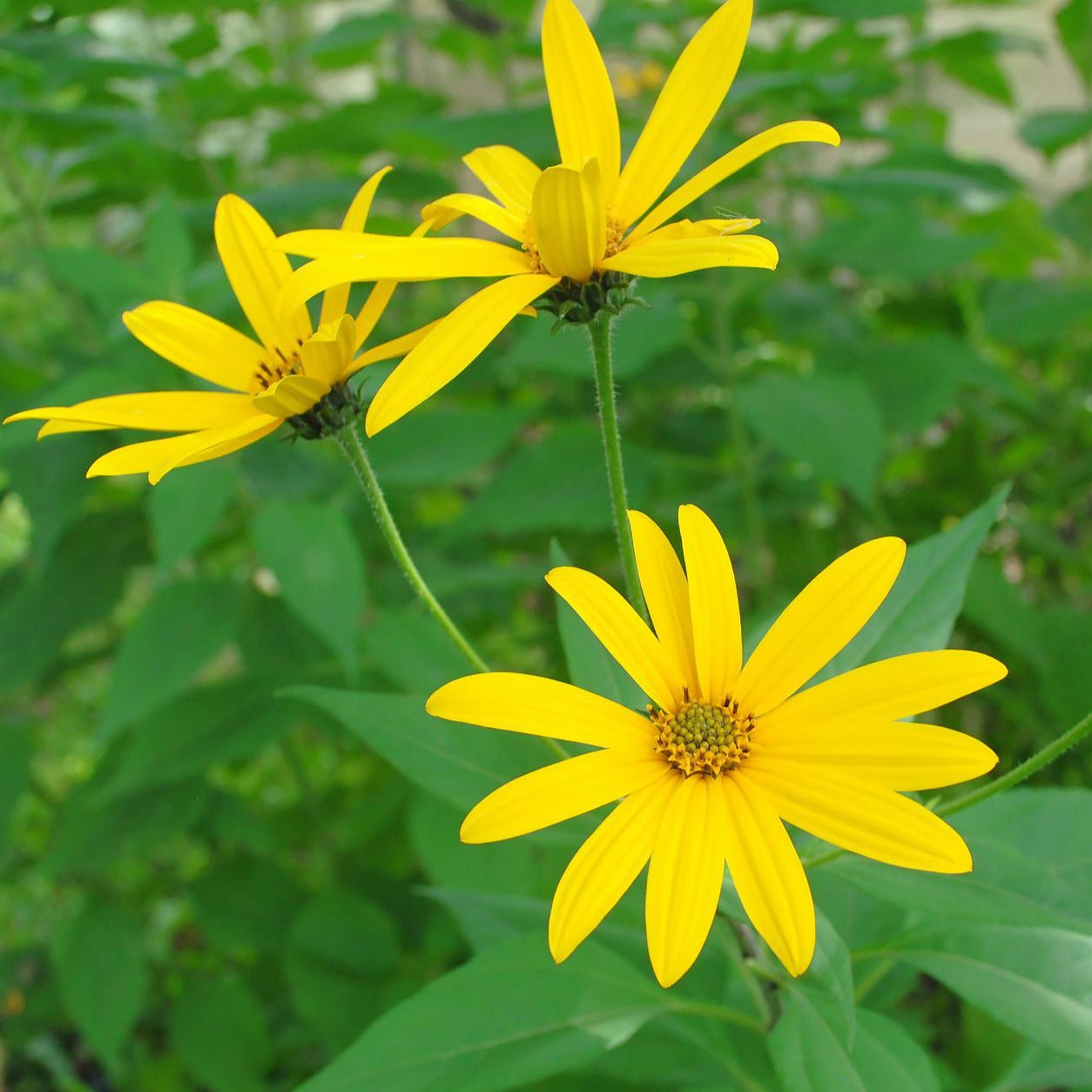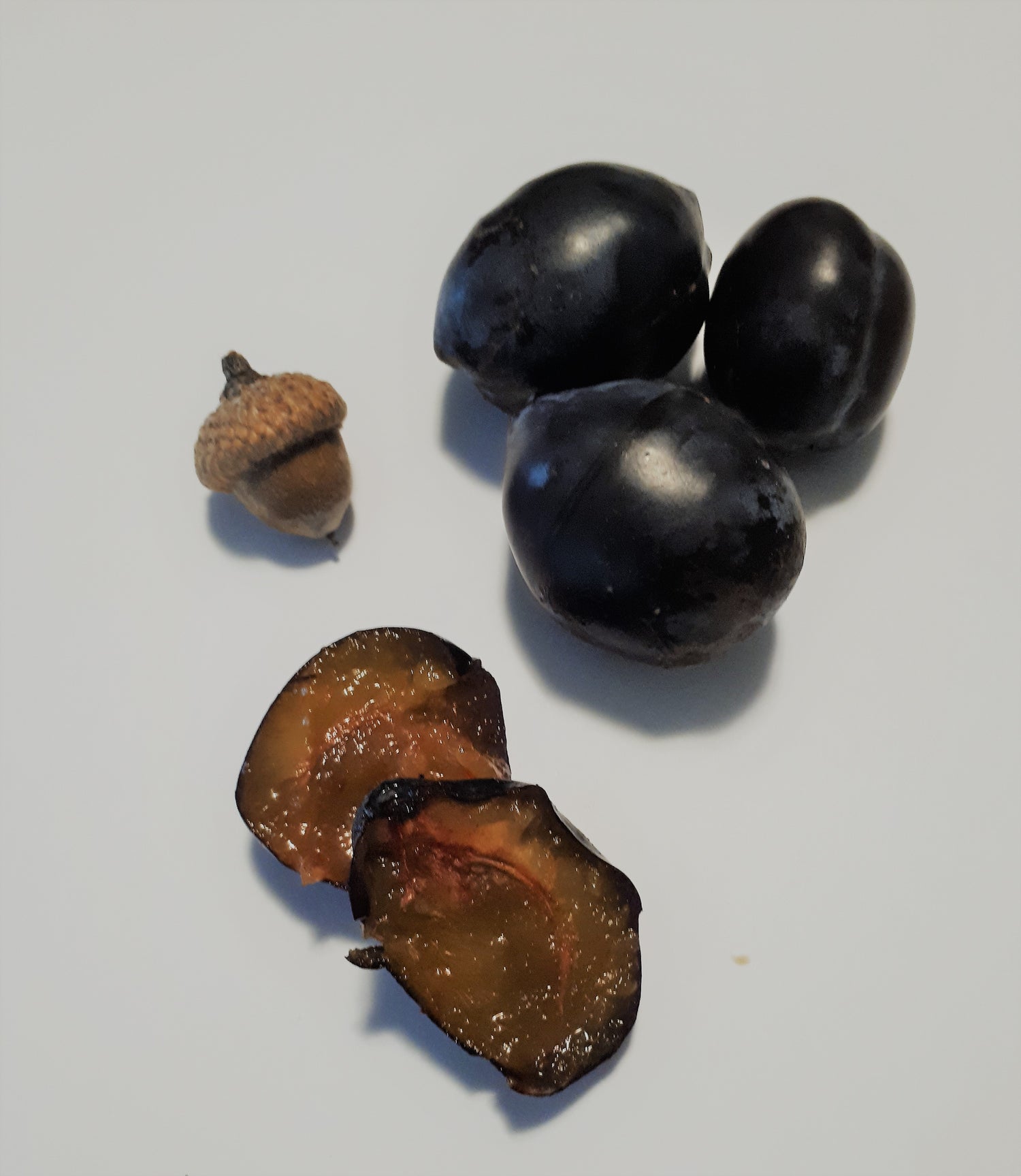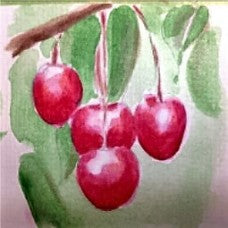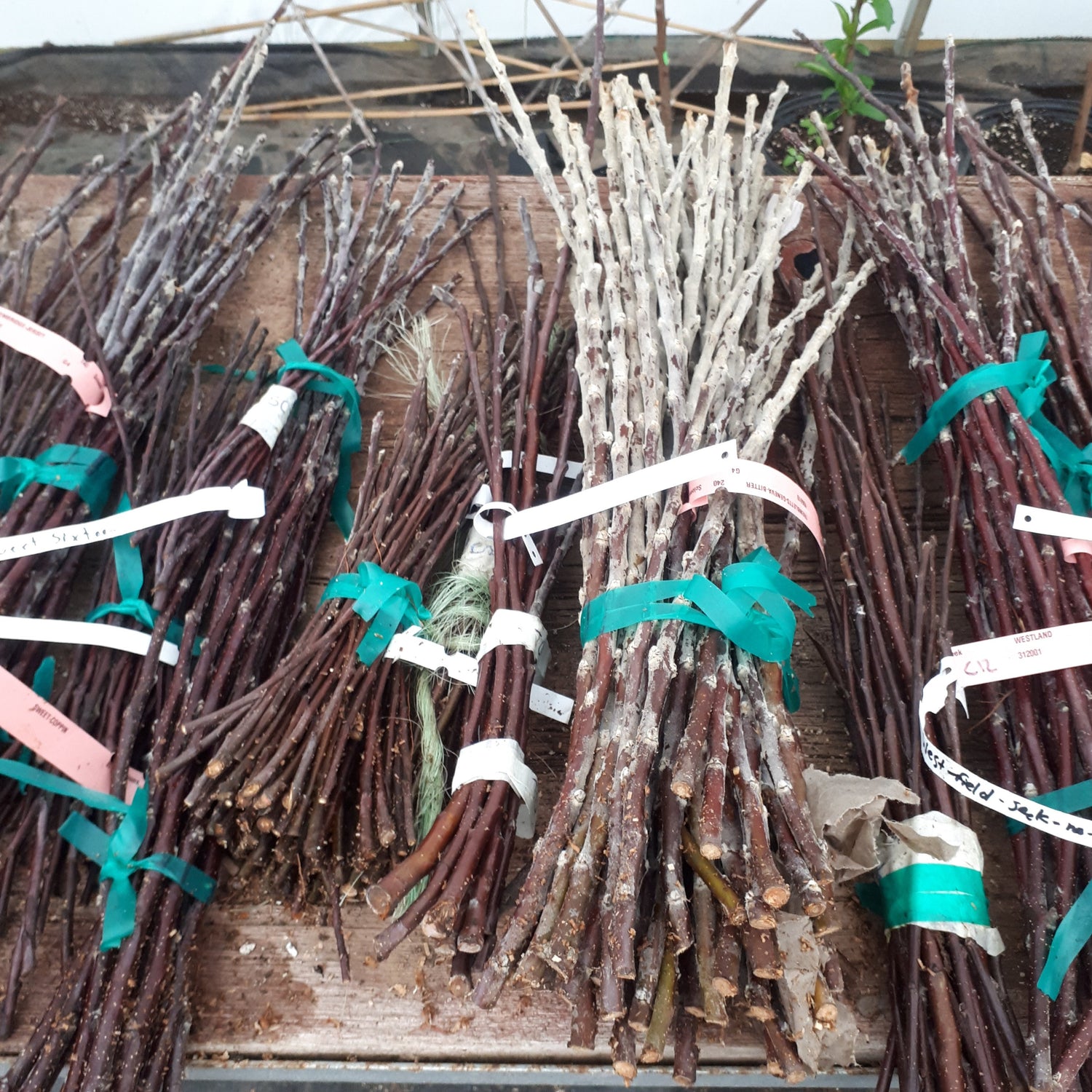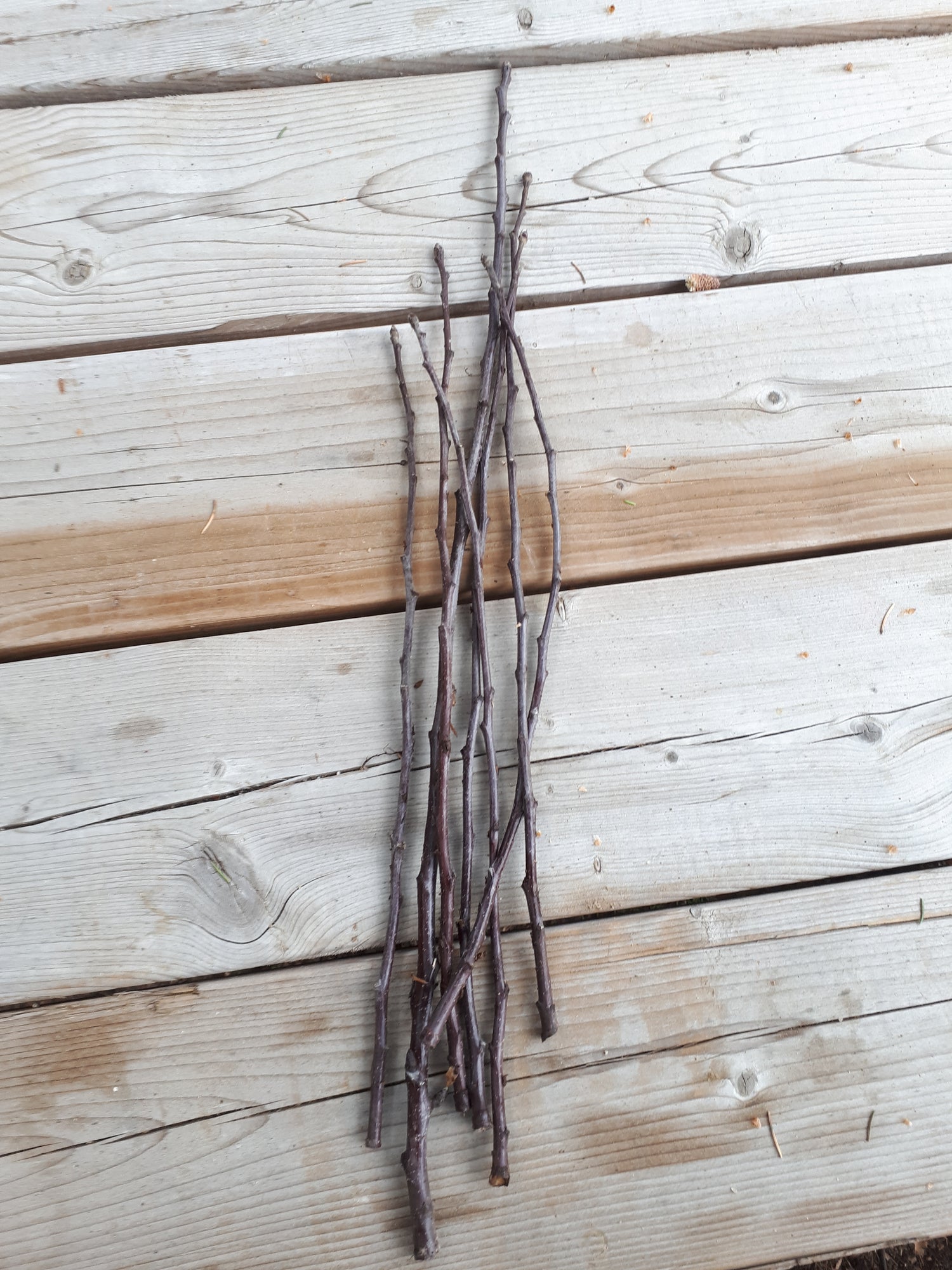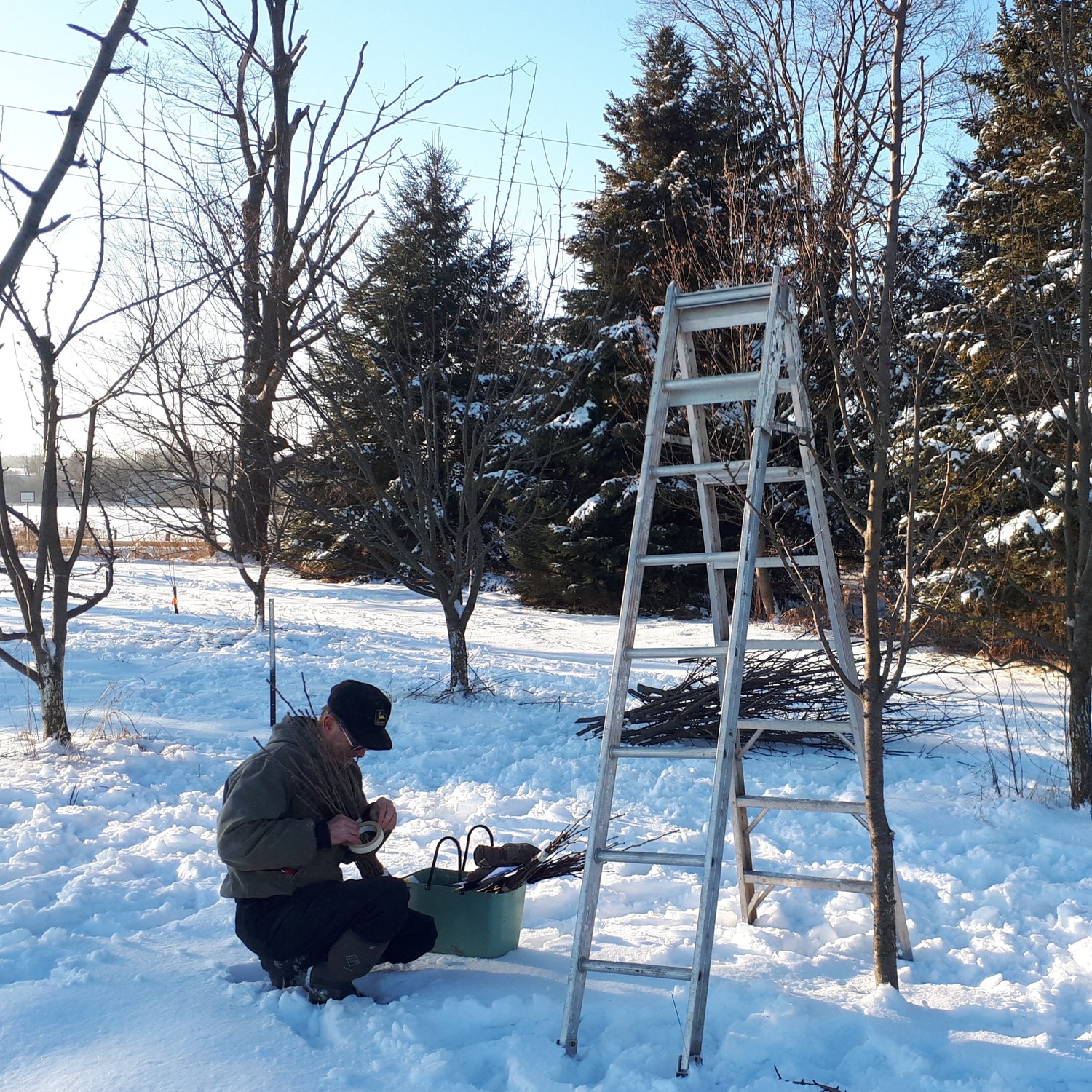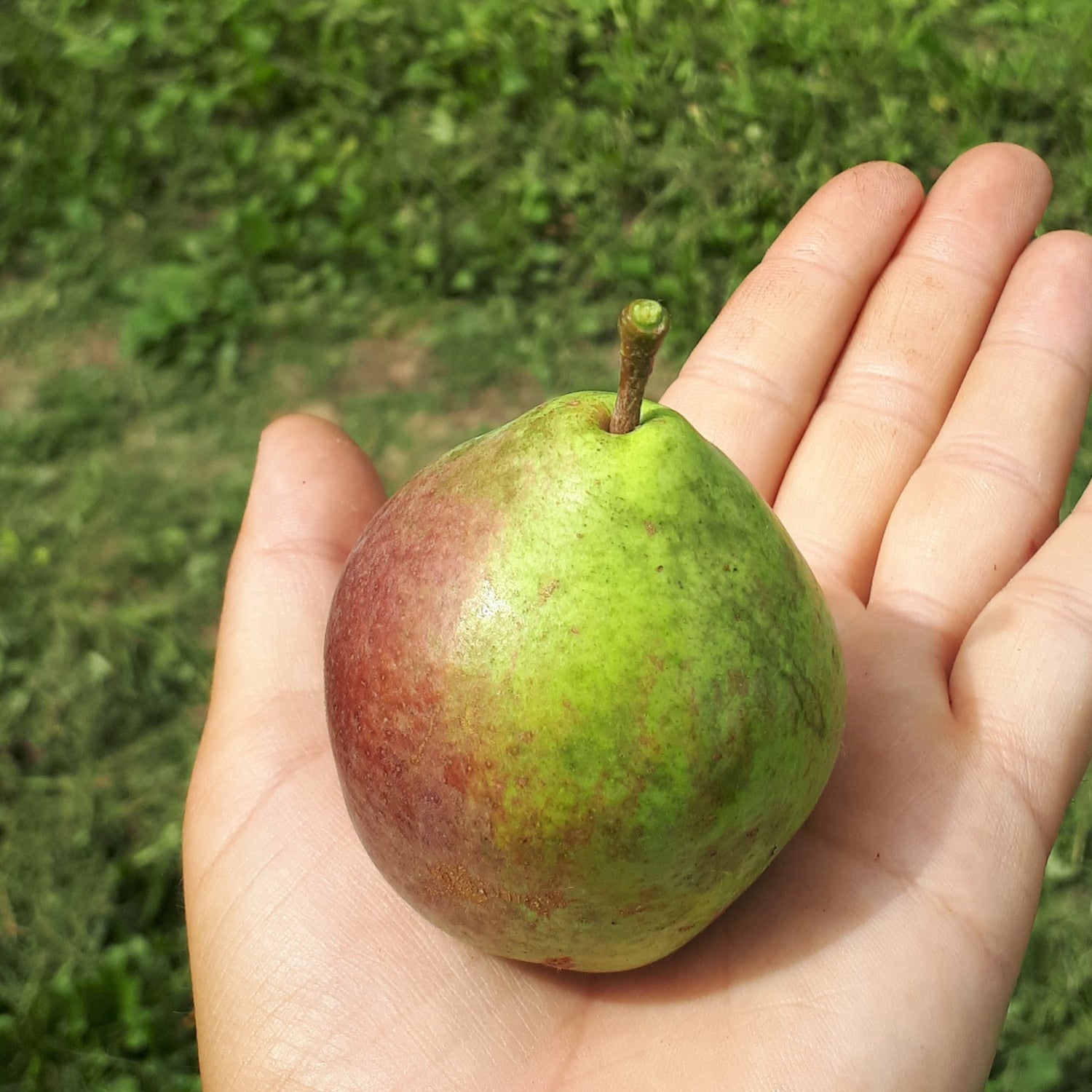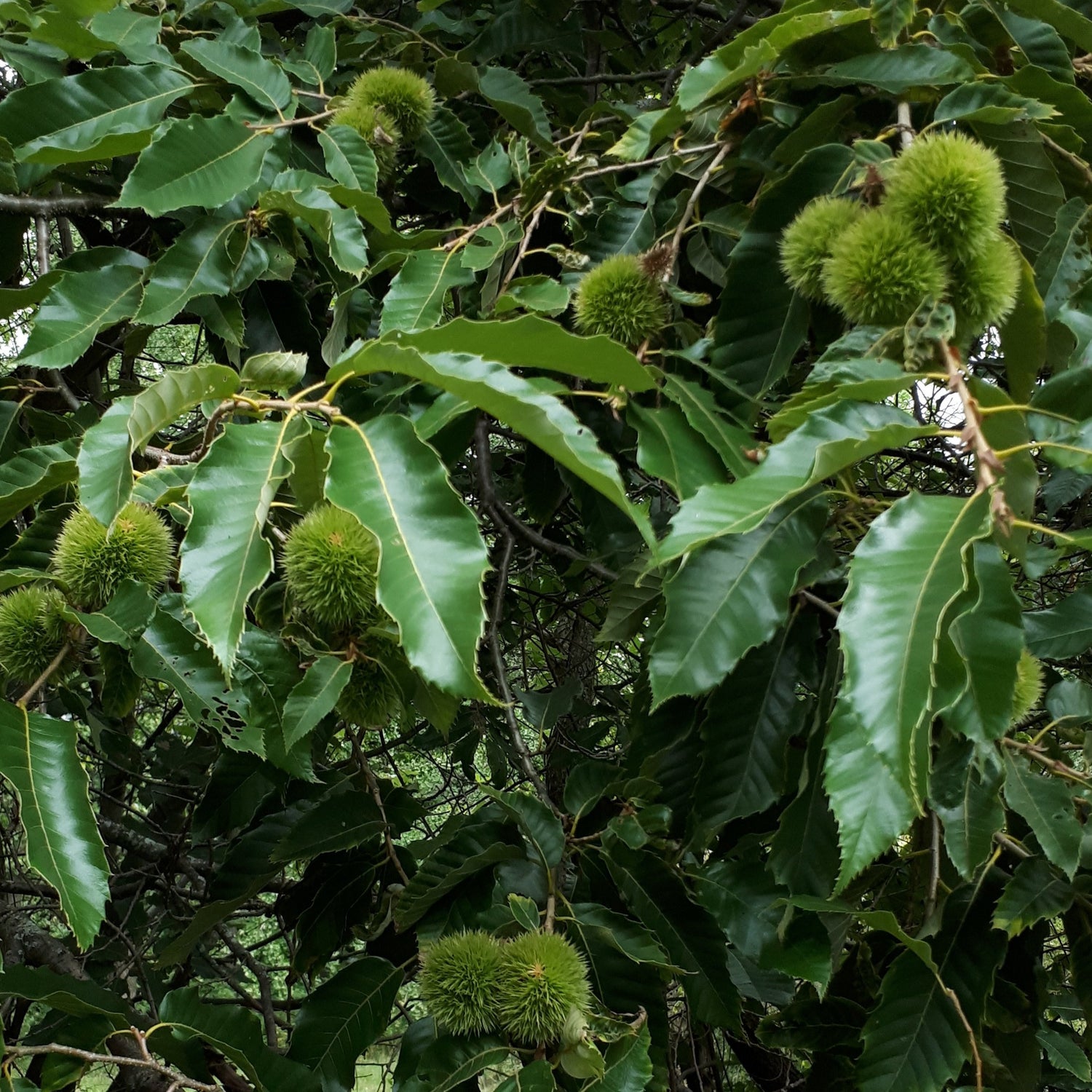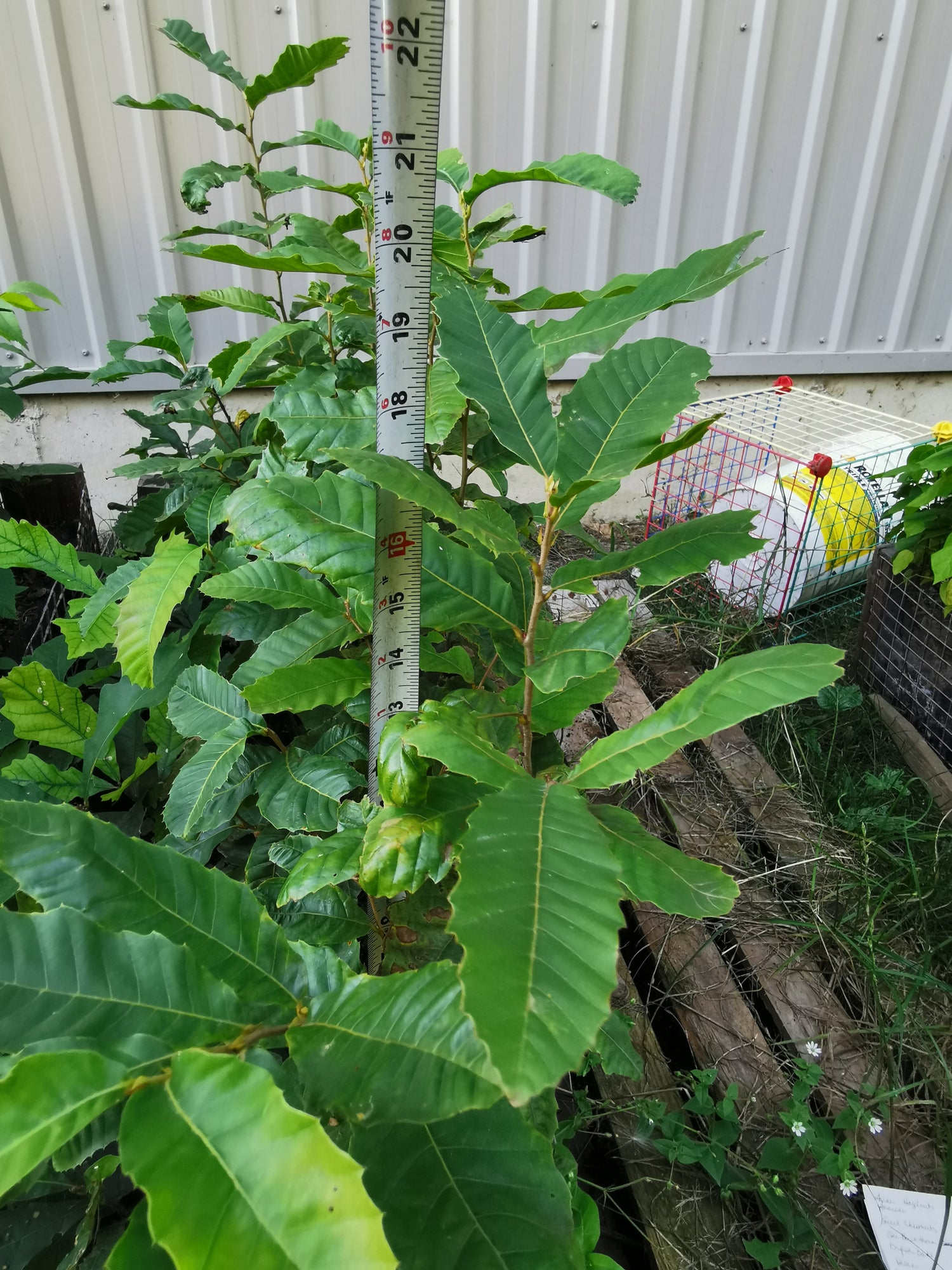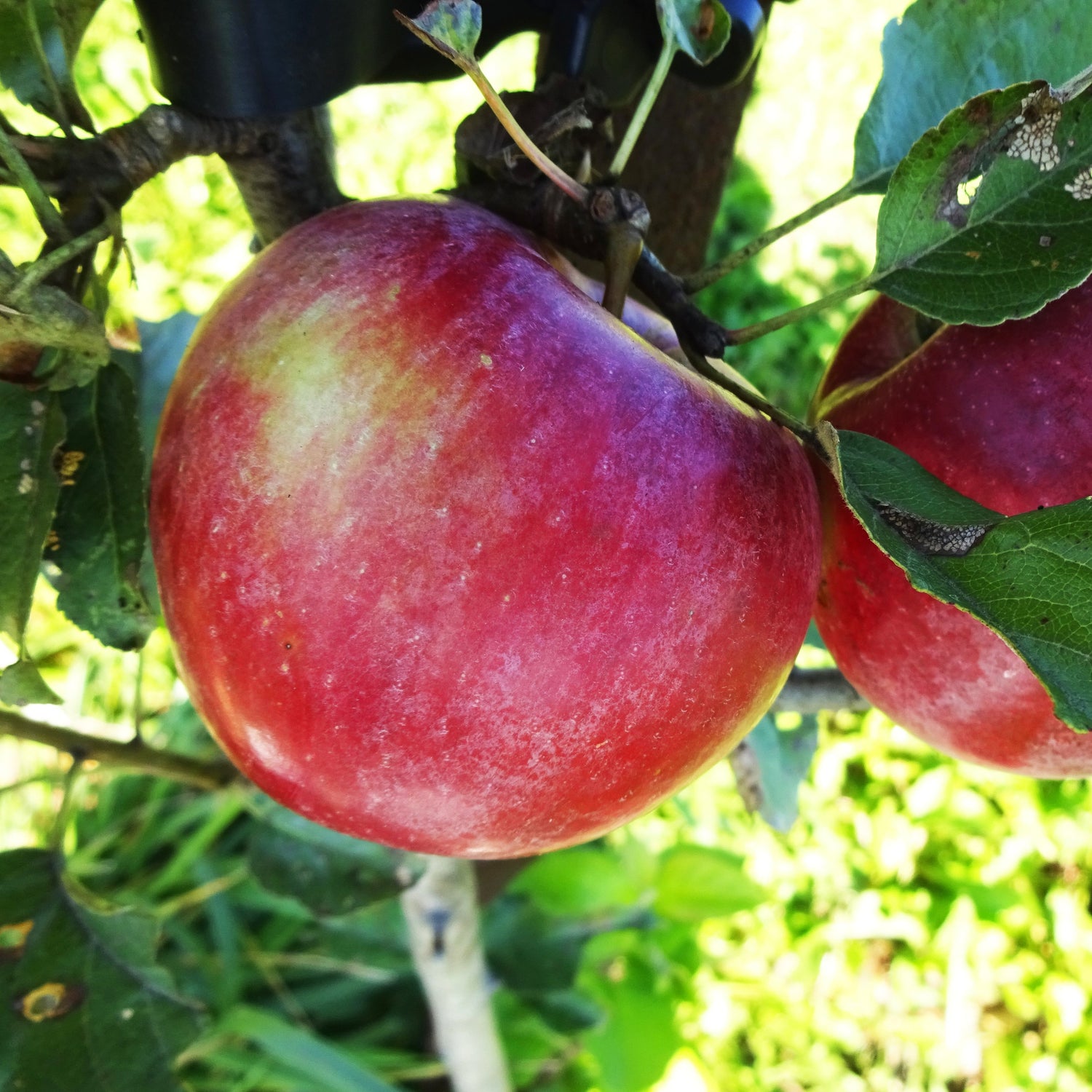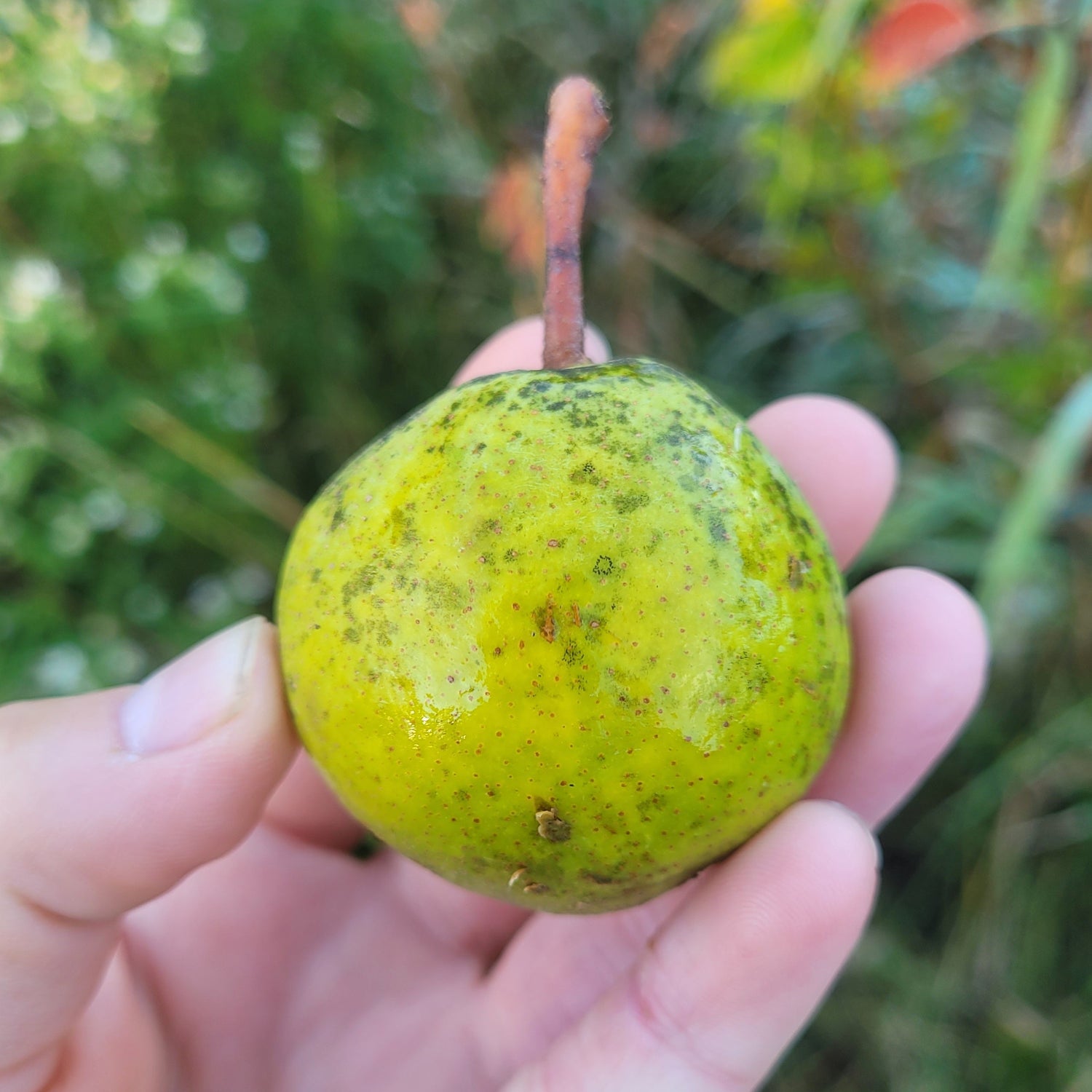Products
Sort by:
475 products
475 products
Species: Lindera benzoin
History: Spicebush is native to eastern North America, although in Canada it can only be found in Ontario. It has been used medicinally by several indigenous peoples and early land surveyors used it to find good agricultural land due to its propensity to grow in good soil. It remains a popular ornamental plant along with its uses for spices and teas. Spicebush is also the only host plant for the spicebush swallowtail.
Why We Grow It: If you want to source your own spices locally, try this aromatic, native shrub! The leaves and berries can be used as substitutes for cinnamon, nutmeg, and allspice. It is attractive to butterflies and the early bloom time means it is a good source of pollen in the spring. The shrub is also quite pretty in autumn when its leaves turn a bright yellow.
Use these spiral guards to keep mice, rabbits, and other critters from girdling your tree. 24 inches high.
We are pleased to offer two options for spiral guards:
- White plastic guards - The white colour helps to avoid damage from the sun and trapping excessive heat around the base of your tree.
- Green biodegradable guards - The biodegradable guards are made of starch based plastic and rated for 2 years, which is nearly as long as the plastic spirals last.
Both types of guards will get brittle after a few years and begin cracking/disintegrating. With the green biodegradable guards, there is no plastic waste to reclaim from your orchard once they begin breaking down.
History: The St. Lawrence apple was discovered in the Montreal area as a seedling of a Snow apple, the most popular variety in Quebec at the time. By 1835, these apples were commonly grown in the area where they were popular for fresh eating and cooking but have since faded into obscurity.
Why We Grow It: Although less popular now, these apples are still good for eating and baking. The boldly striped red skin also makes the fruit very attractive. The tree bears good crops each year and is relatively hardy.
Species: Helianthus tuberosus, Sunchokes are also known as Jerusalem Artichokes or J Chokes
History: Stampede apparently originated on a reserve in northern Ontario where indigenous peoples had been cross-breeding the earliest flowering sunchokes they could find. They succeeded with Stampede which is an early flowering and ripening variety. In 1978, only two tubers were sent to Johnny's Selected Seeds in Maine, producing enough tubers by the end of the year that the nursery was able to introduce the new variety commercially in 1979.
Why We Grow It: Stampede is an extremely productive variety and produces relatively large, if somewhat knobby, white tubers. Like other sunchokes, Stampede can be prepared and eaten in a variety of ways, similar to the many ways you can use a potato! The early flowering and ripening time of this variety is great for anyone with a limited growing season.
History: Stanley plum was developed in Geneva, New York by Cornell University and released in 1962.
Why We Grow It: This freestone European plum has deep purple skin and meaty, golden flesh, the standard for prunes. It has a sweet juicy flavour and is great for fresh eating, canning, and drying. The tree produces heavy, reliable crops.
We use this in our orchard for all trees (both in our experimental orchard and nursery stock) as part of out holistic spray system. You can download the holistic spray recipe here.
Full of trace minerals, this liquid seaweed comes from the Ascophyllum nodosum plant in the Atlantic Ocean.
945mL bottle is enough for 200L of spray mix, or 4x 50L mixes.
History: Stella sweet cherries were developed by the Summerland Research and Development Centre in British Columbia in 1956 by K.O. Lapins, after whom Lapins cherries are named. These cherries were named and released in 1968, becoming the first named variety of self-pollinating sweet cherries. They have since become very popular, especially in the UK, and have been awarded the Royal Horticultural Society's Award of Garden Merit.
Why We Grow It: The Royal Horticultural Society was right to commend Stella. These large cherries have skin that is shiny yet extremely dark red, creating a feast for the eyes as well as the mouth! The flesh is medium firm and has a lovely sweet flavour, great for fresh eating as well as canning. Stella is self-pollinating and makes an excellent pollinator for other varieties.
History: Not to be confused with Stembridge Cluster, Stembridge Jersey was introduced in Somerset, England, in the 1950s. To this day it remains a popular variety in UK cider orchards.
Why We Grow It: The good-quality bittersweet juice produced by this variety explains why it is still popular in the UK. Although Stembridge Jersey suffers from a tendency to only produce fruit every other year, it does produce good crops in those alternate years and is relatively disease resistant.
History: This English cider apple originated in and was named after Rodney Stoke, a small village in Somerset, England. It was discovered around 1920 and has been popular in England since.
Why We Grow It: Stoke Red produces a great bittersharp juice that is well-regarded for cider making. As an added bonus, it is a heavy cropper and resistant to scab.
If you are interested in scionwood for Spring 2026, either email us with your requests or sign up for restock notifications below.
For those looking to graft heritage and unique stone fruit trees, we are happy to provide scionwood directly from our orchards! We generally recommend budding stone fruits in the summer rather than bench grafting in the spring but we have scionwood available for those who are interested! Please contact us if you are interested in budwood for the summer.
We offer a wide selection of scionwood which will be listed further below, separated by species. The exact selection will vary year to year as some varieties mature and depending on the growing season.
ORDERING & SHIPPING SCION: Orders must be placed by January 31st, 2026 for the Spring 2025 season and we require a minimum 25% deposit upfront. We will be shipping all scion orders in the 2nd week of April; for those who order both scion and rootstock/plants, your scion will ship with your other products when all items are ready.
Due again to the nature of nature, sometimes scions begin budding out early and we want to ensure you receive dormant scionwood that you will have time to graft with. If you need to hold your scionwood dormant until May, you will need to decide how you will do that. It is relatively simple, and you can learn more about storing scionwood at home here. If you are picking up your scion order, we recommend doing so ASAP after you receive your pickup notification via email.
Size: 12-18" or 30cm+, as available*. If a scion is less than 6" or 15cm, it will be discounted accordingly.
*Since we specialize in so many varieties, they each have a unique growth habit and vigor. Some cultivars will produce long relatively thick scions, and others tend to produce shorter, thin scions (see photos to the left). We will provide the best quality we can, within natural restraints.
Pictured to the left, some of our scionwood and Wayne bundling and labeling pear scions.
History: Strawberry Pippin is another variety whose history we know little about. All we know is that it likely originated in England where it was first recorded in 1874. The 'pippin' in its name indicates that it was grown from seed by chance.
Why We Grow It: While we may not know much about its past, we do know why we are happy to grow it! Strawberry Pippin has an attractive red striped fruit which is quite firm and sweet. Its excellent flavour is best enjoyed picked fresh right off the tree. In our experience, Strawberry Pippin does well with minimal care, and is an excellent choice for the backyard.
History: Summercrisp pears were developed by the University of Minnesota in an effort to create a cold hardy pear. They were successful in creating a hardy and delicious pear, releasing the variety in 1985. Its name is derived from the fact it ripens in summer (very early for a pear!) and that it is great right off the tree when still crisp.
Why We Grow It: Summercrisp performs amazingly in our test orchard, producing lots of freckled beauties that ripen uniformly and hang well on the tree. This early cold-hardy pear has a really sweet, pleasant flavour and is not gritty or dry. The fruit are average-sized with yellow skin and red blush. For optimal eating they should be picked before fully ripe and stored in the fridge until eating. This variety deserves to be more widely planted.
Why We Grow It: It is hard to turn down an apple that sounds as wonderful as Sundance! It is crisp and juicy with a spicy, citric flavour. Along with being great for fresh eating, the fruit also holds its shape well when baked. As an added bonus, this variety is resistant to many common apple diseases and stores quite well so you'll have plenty of high quality apples to easily last you through the winter.
Species: Castanea dentata x mollissima
History: These seedlings are a cross between Chinese chestnuts and American chestnuts grown from seed from Grimo Nut Nursery. As a hybrid of Chinese and American chestnuts, these seedlings have blight resistance along with good cold hardiness.
Why We Grow It: This tree has incredible potential as a truly sustainable food source for humans. High in vitamins and starch, the nuts can be used to make a flour food staple, or pressed for oil to be made into bio fuel. For more inspiration and ideas in growing sweet chestnuts as a crop, we recommend the book Restoration Agriculture: Real-World Permaculture for Farmers by Mark Shepard.
History: Sweet Coppin originated in Devon, England, in the early 1700s. It was grow on a relatively large scale in the 1800s before its popularity waned, although it has since made a comeback and is grown around the world.
Why We Grow It: While this old English cider apple has a very good but mild flavour that is suitable for fresh eating, it is most well known for its cider qualities. It produces a full sweet cider of vintage quality
History: Sweet Sixteen was developed by the University of Minnesota and introduced in 1977. It is one of nearly thirty varieties released by the university since its breeding program began in 1888.
Why We Grow It: Some apples taste better when grown in colder climates, and Sweet Sixteen is one of them. For a fresh-eating apple, this is a favourite. Sweet Sixteen provides that crisp first bite that so many people love in an apple, and the pure white flesh will not disappoint for flavour with a very unique, distinct honeyed flavour. Its cold-hardiness and general disease-resistance (tolerant of scab and cedar rust) make it winner for the grower too.
History: Little is known about the origins of Taynton Squash. Its name is derived from the village of Taynton in England where it was discovered at the parish. It was possibly discovered at some point in the 17th century as writings on it from 1811 describe it as an old variety. It was noted at the time for producing an excellent perry although now it is considered rather average.
Why We Grow It: This ancient English perry pear produces 4-5cm round green fruits in heavy crops. They should be blet for two days at most before being turned into perry, of which they make an average quality single-variety perry.
Terra Biosa is a dynamic, microbial soil inoculant. It is categorized as a Biological Compost Aid for the cultivation and stimulation of soil productivity and plant health. This all-natural and organic product is useful in orchards, vineyards, gardens, and compost by providing the following benefits:
- Stimulates plants metabolism
- Enhances yield as well as quality of fruit and produce
- Improves resistance to fungal infestations
- Improves soil quality by restoring micro-organisms in the soil
We use this in our orchard for all trees (both in our experimental orchard and nursery stock) as the effective microbe component of our holistic spray system. You can download the holistic spray recipe here.
Recommended Application Rates:
Soil: Mix 1 tsp of Terra Biosa per 40 sq. ft. (4 m2) in your water and apply while irrigating. Apply every two weeks for best result.
Foliar care and feeding: Mix 1 tsp. of Terra Biosa per 1L of fresh (preferably structured) water and apply using a spray bottle. Remember to mist leaves on both sides.
History: Texas Everbearing figs were likely developed in Texas in the 1950s although there are little details available regarding their origin. It is most likely named for its two sizable crops and state of origin.
Why We Grow It: Texas Everbearing produces large, brownish-yellow, bell-shaped figs with sweet seedless flesh the colour of strawberries. This is a good option for cooler areas, it tends to produce well even in a cooler, shorter summer and it is said to fruit again the same year it is frozen to the ground. It produces two crops, a sizable first crop and larger breba crop that matures early.
For decades fruit growers have sprayed their trees with toxic chemicals in an attempt to control a range of insect and fungal pests. Yet it is possible to grow apples responsibly, by applying the intuitive knowledge of our great-grandparents with the fruits of modern scientific research and innovation.
Since The Apple Grower first appeared in 1998, orchardist Michael Phillips has continued his research with apples, which have been called "organic's final frontier." In this new edition of his widely acclaimed work, Phillips delves even deeper into the mysteries of growing good fruit with minimal inputs.
Authors: Leslie Bennett, Stefani Bittner
The Berry Grower is an innovative guide for growing and marketing organic small fruits and berries that offers intelligent strategies and solutions for successful small-scale, non-chemical fruit production in the 21st century. From the market garden and small farm to the homestead and backyard, The Berry Grower is the essential guide for both new and aspiring organic small fruit growers and seasoned farmers looking to produce high-quality organic fruits and products for local markets and self-sufficiency.
The Ecological Farm offers a unique focus on reduced tillage, minimizing farm and garden inputs, and pest control.
Reflecting the wisdom that farmer, consultant, and educator Helen Atthowe and her late husband, Carl Rosato, gained during decades of farming experience, this book guides readers on how to reduce or eliminate the use of outside inputs of fertilizer or pesticides—even those that are commonly used on certified organic orchards and market gardens. In clear language and with color photographs, charts, and graphs throughout, the book emphasizes the importance of managing the details of an entire growing system over the full life of the enterprise.
Based on advances in scientific research in ecological food production, farmers, homesteaders, permaculturists, and gardeners alike will learn methods to:
- design a farm system that maintains a growing root in the soil year-round to feed the microbial community instead of just crops.
- strengthen the “immune system” of a farm or garden
- supply crop needs using only on-farm inputs such as cover crops and living mulch
- maximize the presence of beneficial insects and microbes that support healthy crop development
- minimize ecological impact in dealing with insect pest and disease problems
Forage, Cultivate, Prepare, Preserve
Once a staple in homes across the world, and found along every highland, highway, and hedgerow, the forgotten elderberry is making a comeback. Its popularity as medicine is surging, its choice as an edible landscaping plant is growing, and its use for wine-making and crafts is being rediscovered.
Spanning history and geography, The Elderberry Book takes you on an adventure, deepening your appreciation of a plant that has played a crucial role across the world for thousands of years. Through this fun, inspirational, and educational resource, discover:
- Elderberry's amazing history
- Cultivating and foraging, from the balcony to the backyard
- Various traditional food and medicine preparations
- Simple wine-making techniques
- Traditional crafts and tools.
This is the definitive guide to the many uses of elderberry; no matter where you are, humankind's oldest plant friend can provide you with anything from syrup to wine to dyes, and more.
Paperback – 128 pages
7.5 Inches × 9 Inches (w × h)
Weight: 353.81 Grams
BISAC: HEALTH & FITNESS / Diet & Nutrition / General
Publisher: New Society Publishers
ISBN: 9780865719194
Pub. Date: 2019-09-24
The Holistic Orchard: Tree Fruits and Berries the Biological Way demystifies the basic skills everybody should know about the inner-workings of the orchard ecosystem, as well as orchard design, soil biology, and organic health management. Detailed insights on grafting, planting, pruning, and choosing the right varieties for your climate are also included, along with a step-by-step instructional calendar to guide growers through the entire orchard year. The extensive profiles of pome fruits (apples, pears, Asian pears, quinces), stone fruits (cherries, peaches, nectarines, apricots, plums), and berries (raspberries, blackberries, blueberries, gooseberries, currants, and elderberries) will quickly have you savoring the prospects.
Michael Phillips has been a huge inspiration for how we run things here at Silver Creek Nursery. From considering the principles of orchard ecosystems to the holistic spray recipe we have listed on our website, his knowledge and insight has been an irreplaceable resource for us.
In The Home-Scale Forest Garden, Baker shares what she learned as she became a forest gardener, providing a practical, in-depth guide to creating a beautiful, bountiful edible landscape at any scale—from a few dozen square feet to an acre or more.
Baker provides information on planning, planting, and maintaining a resilient forest garden ecosystem, including:
- Using permaculture principles
- Observing and mapping your space
- Building planting beds, including hügelkultur mounds
- Coping with saturated soil
- Matching perennial edible plants to the right growing conditions
- Grouping plants in diverse layers that attract and shelter beneficial insects and birds
- Creating microclimates to increase the range of plants you can grow
- Pruning, propagating, managing pests, and more
- Expending less energy for greater reward
The Home-Scale Forest Garden is complete with descriptions of over 100 food-bearing and multifunctional plants for every layer of a forest garden: overstory and understory trees, shrubs, herbaceous plants, groundcovers, vines, and mushrooms, too.
A Successful Grower's Handbook for Small-Scale Organic Farming
Les Jardins de la Grelinette is a micro-farm located in Eastern Quebec, just north of the American border. Growing on just 1.5 acres, owners Jean-Martin and Maude-Helene feed more than 200 families through their thriving CSA and seasonal market stands and supply their signature mesclun salad mix to dozens of local establishments. The secret of their success is the low-tech, high-yield production methods they've developed by focusing on growing better rather than growing bigger, making their operation more lucrative and viable in the process.
The Market Gardener is a compendium of La Grelinette's proven horticultural techniques and innovative growing methods. This complete guide is packed with practical information on:
- Setting-up a micro-farm by designing biologically intensive cropping systems, all with negligible capital outlay;
- Farming without a tractor and minimizing fossil fuel inputs through the use of the best hand tools, appropriate machinery and minimum tillage practices;
- Growing mixed vegetables systematically with attention to weed and pest management, crop yields, harvest periods and pricing approaches.
Inspired by the French intensive tradition of maraichage and by iconic American vegetable grower Eliot Coleman, author and farmer Jean-Martin shows by example how to start a market garden and make it both very productive and profitable. Making a living wage farming without big capital outlay or acreages may be closer than you think.
Paperback – 224 pages
8.5 Inches × 8.5 Inches (w × h)
Weight: 499 Grams
BISAC: TECHNOLOGY & ENGINEERING / Agriculture / Organic
Publisher: New Society Publishers
ISBN: 9780865717657
Pub. Date: 2014-03-01
All around the world, the public’s taste for fermented cider has been growing more rapidly than at any time in the past 150 years. And with the growing interest in locally grown and artisanal foods, many new cideries are springing up all over North America, often started up by passionate amateurs who want to take their cider to the next level as small-scale craft producers.
To make the very best cider—whether for yourself, your family, and friends or for market—you first need a deep understanding of the processes involved, and the art and science behind them. Fortunately, The New Cider Maker’s Handbook is here to help. Author Claude Jolicoeur is an internationally known, award-winning cider maker with an inquiring, scientific mind. His book combines the best of traditional knowledge and techniques with up-to-date, scientifically based practices to provide today’s cider makers with all the tools they need to produce high-quality ciders.
The New Cider Maker’s Handbook is divided into five parts containing:
- An accessible overview of the cider making process for beginners;
- Recommendations for selecting and growing cider-appropriate apples;
- Information on juice-extraction equipment and directions on how to build your own grater mill and cider press;
- A discussion of the most important components of apple juice and how these may influence the quality of the cider;
- An examination of the fermentation process and a description of methods used to produce either dry or naturally sweet cider, still or sparkling cider, and even ice cider.
This book will appeal to both serious amateurs and professional cider makers who want to increase their knowledge, as well as to orchardists who want to grow cider apples for local or regional producers. Novices will appreciate the overview of the cider-making process, and, as they develop skills and confidence, the more in-depth technical information will serve as an invaluable reference that will be consulted again and again. This book is sure to become the definitive modern work on cider making.
A mechanical engineer by profession, Claude Jolicoeur first developed his passion for apples and cider after acquiring a piece of land on which there were four rows of old abandoned apple trees. He started making cider in 1988 using a “no-compromise” approach, stubbornly searching for the highest possible quality. Since then, his ciders have earned many awards and medals at competitions, including a Best of Show at the prestigious Great Lakes International Cider and Perry Competition (GLINTCAP).
Claude actively participates in discussions on forums like the Cider Digest, and is regularly invited as a guest speaker to events such as the annual Cider Days festival in western Massachusetts. He lives in Quebec City.
Wade Muggleton has distilled 20 years of orchard know-how into this practical handbook to help you plan, plant, and manage your orchard, whatever your garden size or budget.
With his expert guidance you can have an orchard on any plot—garden, yard, allotment or smallholding—and both maximise your harvest and minimise your outlay. The book covers:
- Rootstocks and fruit varieties
- Planting plans
- Maintenance strategies
- Pruning
- Propagation
- Eco-friendly pest and disease management
- Harvesting
- Storing
- Preserving the harvest
In The Regenerative Grower’s Guide to Garden Amendments, experimental gardener and author Nigel Palmer provides practical, detailed instructions that are accessible to every grower who wants to achieve a truly sustainable garden ecosystem—all while enjoying better results at a fraction of the cost of commercial fertilizer products. These recipes go beyond fertilizer replacement, resulting in greater soil biological activity and mineral availability. They also increase pest and disease resistance, yields, and nutrient density.





